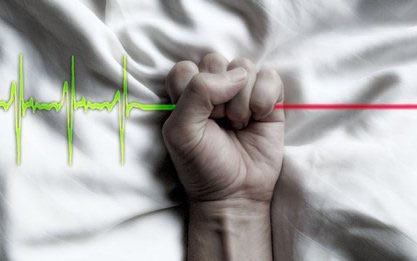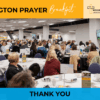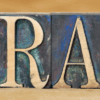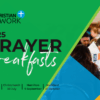If approved by a majority of voters in the coming Referendum, the End of Life Choice Act will allow eligible terminally ill people to request ‘assisted dying’, either by a doctor or nurse practitioner directly administering lethal drugs (euthanasia) or by a doctor or nurse practitioner setting them up with lethal drugs to take themselves (assisted suicide).
Many New Zealanders like the idea of euthanasia as an option for those terminally ill, and assume the End of Life Choice Act must be okay. They have thoughts like ‘I wouldn’t want to die in unbearable pain. I would like the option to die, in dignity, at the time of my own choice. It’s my own life.’ Or that euthanasia is compassionate, because they feel it could prevent suffering. Or that ‘We do it for our cats and dogs. Why not for human beings?’ These thoughts make it easier to accept the politicians’ claims that similar euthanasia legislation has ‘worked well overseas’, and that the End of Life Choice Act contains ‘rigorous safeguards’.
But here’s a dozen very serious reasons why the End of Life Choice Act is so wrong and dangerous for New Zealand, and why we need to vote AGAINST it.
- Legally and practically, New Zealanders already have a ‘right to die’. Nobody is forced to have their lives unnecessarily prolonged. People may freely decline tests, treatment, or surgery. Doctors do not continue treatment or keep life-support going, when there is no hope of recovery. People may sign a ‘Do not resuscitate’ order, and state their wishes for end-of-life care in an Advance Directive. We already have a right to as much pain relief as needed (even if this has a double effect of shortening our lives).
- In reality, very few people die in unbearable pain. Many die peacefully, or in their sleep, or having become unconscious. Modern palliative care can control most pain.
- Those final days are important. The last week or so of someone dying with a terminal illness can often be a time when both patient and family come to peace with the impending death and bereavement, and is a factor in healthy grieving. Euthanasia interrupts the natural ‘letting go’.
- New Zealanders need to realise the chilling long-term risks: we are very unwise to allow anyone (including doctors and nurse practitioners) to legally kill someone else, or to actively help them commit suicide. That is a highly dangerous line for society to cross. It is at our peril that we allow another form of killing to be introduced. It is not just that killing people is regarded by most people as ethically or culturally abhorrent, it is also a matter of safe-guarding the long-term public safety of our society.
- It makes no sense at all for society to deplore high rates of suicide, and then to legalise medically-assisted suicide. The legalisation of medical suicide will give another reason for vulnerable people to feel suicide is an acceptable option.
- Similar euthanasia legislation overseas has NOT worked well: it has led to a steady increase in inappropriate and wrongful deaths.
- The End of Life Choice Act does NOT have rigorous safeguards, and in particular does not protect against coercion. It is loose and poorly-drafted legislation, and would be one of the most liberal euthanasia laws in the world. Many obvious safeguards are missing…
● Above all, there is no effective protection against people being subtly influenced by others into requesting euthanasia. Many older people are very anxious about not ‘becoming a burden’ for loved ones. They may feel obliged to sign a request for euthanasia when it is mentioned as an option by a medical professional (the Act only restricts doctors making the suggestion during appointments), or when hinted at by family eager to receive their inheritance before it is all spent on care, or when euthanasia becomes much more common.
● There is no requirement that euthanasia be a last resort, after treatment has failed.
● There is no requirement that someone first sees a palliative care specialist.
● There is no requirement that one of the doctors actually knows the patient.
● There is no mandatory psychological assessment, for instance for depression.
● There is no mandatory cooling-off period.
● There is no provision for an independent witness at any part of the process.
● There is no requirement for anyone to consult or tell their parents or children.
● There is inadequate protection for those medical staff for who object to euthanasia on ethical and conscience grounds.
● The reporting required is inadequate - Medical diagnoses and prognoses can often be wrong. People with terminal illnesses can live much longer than expected, or recover. Under this law, some will die who would otherwise have survived.
- The majority of doctors are strongly against euthanasia: they see it as contrary to their commitment to healing and caring for patients, and want nothing to do with it. Many are also worried that euthanasia will undermine proper funding for palliative care, and that it will erode patient trust. The New Zealand Medical Association is very opposed to euthanasia.
- The inevitable expansion of this new ‘human right’.Once society crosses the key threshold of allowing doctors (on request) to actively kill people with terminal illness, within a few years Parliament will inevitably start extending this ‘right’ to other ‘unbearable’ conditions, such as disability, mental illness, depression, chronic illness, dementia, and old-age frailty. That is exactly what has happened in most overseas jurisdictions that have allowed ‘assisted dying’. Because of that, many disabled people feel very deeply concerned about the End of Life Choice Act.
- The inevitable increase of involuntary euthanasia. Once voluntary euthanasia becomes legal and common, instances of involuntary euthanasia will likewise steadily increase. The climate of thought will steadily change, and some doctors will begin quietly euthanising patients who they decide have no ‘quality of life’, and who are taking up costly space in hospitals or care facilities. They will rationalise this as compassion, and as responsible stewarding of public resources. This too has happened in a number of countries, which began with ‘assisted dying’ as in this Act.
- As euthanasia becomes normalised, society’s disadvantaged and vulnerable people are those most likely to be euthanised, in increasing numbers. Poor and vulnerable people have less access to financial reserves, to expensive treatments, and to first-rate palliative care, and may feel they have fewer options.
A statement by the New Zealand Christian Network, September 2020









0 Comments